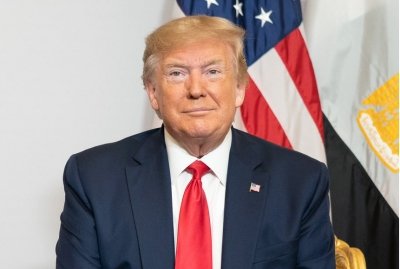

New York, Aug 1 (IANS) As the deadline for tariffs neared, US President Donald Trump imposed the threatened tariff of 25 per cent on India starting Friday as the prolonged negotiations appeared to have stalled.
His executive order, issued late Thursday, did not include penalty tariffs on buying Russian energy or for BRICS membership, which he had also threatened.
When Trump initially threatened the 25 per cent tariff, India said defiantly that it “will take all steps necessary to secure our national interest”.
In the order setting the tariff rates for various countries, he claimed he was acting because “large and persistent annual US goods trade deficits constitute an unusual and extraordinary threat to the national security and economy of the United States”.
The 25 per cent tariff for India was higher than the rate ranging between 15 per cent and 19 per cent he imposed on most countries listed in the order, which takes effect at midnight (9.30 a.m. in India).
While India was one of the first countries to start negotiations with the US, the talks appeared to have foundered, and Trump made the threat of 25 per cent on Wednesday, but later that day, he held out a ray of hope, saying, “We’re talking to India now, we’ll see what happens”.
He also did not issue a formal letter to India as he had to other countries.
But it appears that last-minute negotiations did not lower the tariffs.
While the negotiations were taking place, Trump repeatedly called Prime Minister Narendra Modi and India his friends.
As recently as last week, he said that a deal was imminent.
India’s Commerce Minister Piyush Goyal also sounded optimistic, saying last week that the negotiations were making “fantastic” progress.
The part of his executive order that would apply to India said that some “trading partners, despite having engaged in negotiations, have offered terms that, in my judgment, do not sufficiently address imbalances in our trading relationship or have failed to align sufficiently with the United States on economic and national-security matters”.
The highest tariff among those in the order was for Myanmar, which was set at 41 per cent, and the lowest was 10 per cent for Brazil and Britain.
Brazil’s rate was a surprise because Trump had threatened 50 per cent over a dispute over Brazil’s prosecution of its former President Jair Bolsonaro.
Trump agreed to extend the deadline for Mexico in a last-minute reprieve, agreeing to continue negotiations.
Canada, with which Trump is embroiled in a heated fight, did not appear on the order, but separately, he had set the tariff at 30 per cent.
Talks are continuing with China, and under a temporary arrangement set to expire on August 12, its rate is temporarily 30 per cent, much lower than his initial threats of as much as 145 per cent.
His order set the tariff for Pakistan at 19 per cent, and Sri Lanka and Bangladesh at 20 per cent.
A major hurdle for India was the US’ insistence on opening the floodgates to US agriculture and dairy.
That could have serious consequences for India’s agricultural sector, which employs nearly half the country’s working population.
India’s statement responding to Trump’s threat alluded to this factor, saying, “The government attaches the utmost importance to protecting and promoting the welfare of our farmers, entrepreneurs, and MSMEs (Micro, Small, and Medium Enterprises)”.
While some, like the European Union and Japan, mollified Trump by offering to invest hundreds of billions of dollars in the US, India was not in a position to make offers of that magnitude.
India also appears to have been caught in the heightened tension between Trump and Russia, after President Vladimir Putin refused to heed the US president’s call for a ceasefire in the Ukraine War.
Trump brought up New Delhi buying Russian oil on Wednesday, and on Thursday, India was in the crossfire in a war of words between him and former Russian President Dmitry Medvedev, even though India had nothing to do with it.
In the Truth Social post attacking Mededev, he brought in India out of the blue: “I don’t care what India does with Russia. They can take their dead economies down together, for all I care”.
As he had for several months, he riled against the high Indian tariffs, having declared India the “Tariff King”, an appellation Finance Minister Nirmala Sitharaman has strongly refuted.
In her budget in February, she substantially lowered the tariff on premium motorcycles that would cover Harley Davidson, the duties on which were Trump’s pet peeve since his first term.
Trump may have to take separate action on India’s pharmaceutical exports valued at $12.7 billion last year, as they form a significant portion of the generic medicines in the US, and any increase in prices would hit the already high medical costs.
Asked about the penalty for buying Russia’s oil, which he had once said would be 100 per cent, by a reporter on Wednesday, he avoided answering it and instead talked of a penalty for membership of the BRICS.
If there is to be a penalty for buying Russian oil — known as a secondary tariff applying to all buyers — it will be linked to the deadline for Moscow to end the Ukraine War, which will probably be on August 7.
Since China is also buying Russian energy, the imposition of secondary sanctions will be complicated as Washington and Beijing try to avoid an all-out trade war.
Similarly, a BRICS penalty would also hit China.
–IANS
al/dpb
